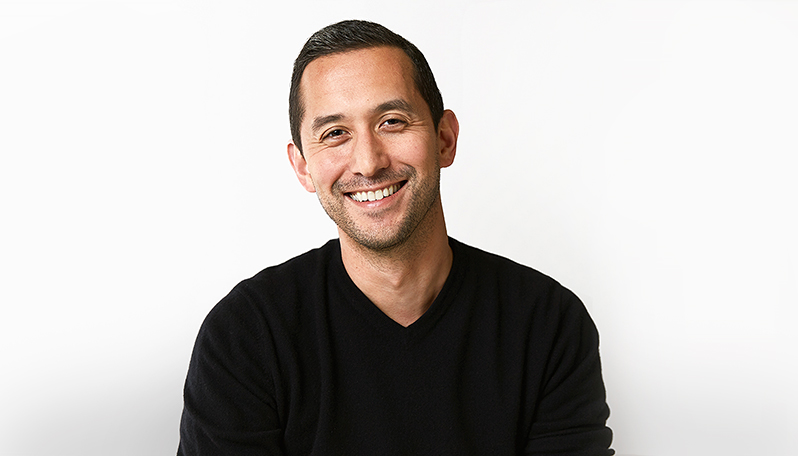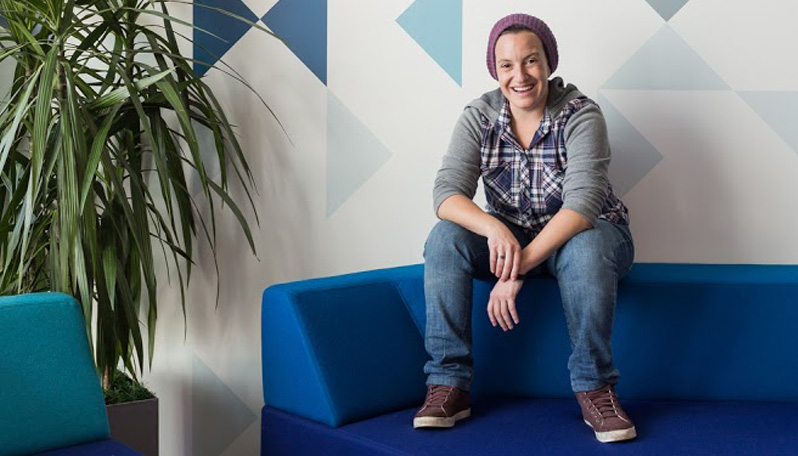Product Inclusion Leadership: Insights from Google UX Director Maggie Stanphill
As a UX Director at Google and co-founder of Google’s UX Content Strategy practice, Maggie Stanphill helps shape how people experience products through language.
This includes not only guiding the naming of products and features, but also writing the words that help you use an app to interact with other people and with the world. UX content strategy can be a poetic exercise, almost like writing haiku, in terms of finding the simplest, yet most useful and meaningful, words. “You’ve got limited space. The economy of language is critical, and every word counts,” Maggie says. “If a product name is not immediately understood, someone might not use it. If it isn’t universally understood, it may literally not translate, and you won’t be able to reach users around the world.”
Maggie is a firm believer that a humanities education brings value to technology companies. She studied English and creative writing at the University of Washington in Seattle, then went on to be an editor in newspapers, magazines, and books. She then applied her language skills to the product realm by moving into the discipline of content strategy, working at Expedia, Razorfish, MSN, and Nike. In 2011, she joined Google, where she has worked on products and services that include Ads, Assistant, Maps, Payments, Search Shopping, and Travel, and established the first company-wide guidelines for UX writing and brand voice. This led to her co-founding Google’s UX content strategy practice. Today, she serves as Director of UX.
Maggie is a champion for inclusive content experiences. Here, she discussed the role that words—and wordsmiths—play when designing products for everyone.
How do you apply your journalistic, editorial background to guide your team to build better user experiences?
My background gives me a solid foundation in research and building rationales to ground objective thinking, which comes in handy when designing for global audiences. I use techniques from editing and journalism by reading into details, weighting and substantiating ideas through facts.
In the product design context, I guide my team to begin with asking “why.” We crystallize this product vision by writing a future press release. This format brings the idea to life in a crisp headline and lead paragraph—skills I mastered as an editor.
We conduct stakeholder interviews and user research, like newspaper reporters. This understanding of people’s needs informs strategies and recommendations for designs. We partner closely with UX researchers to get user insights from the beginning.
For products with content at the core of the experience, we guide design by asking a series of questions to prompt teams to think in terms of what information a user would need to make decisions. So the journalistic adage of asking “who, what, where, when, and why” comes to play quite regularly in my current role.
I also enjoy writing from a first-person point of view to portray user personas and use cases. Humans are hardwired to connect through storytelling. And I find this approach connects with people’s hearts and minds.
How important is it to take an inclusion-forward approach to creating content for emerging interfaces, such as voice?
For me, inclusion has everything to do with building empathy and compassion for people. It’s important to consider who you’re representing and how you’re representing them through the content you include in product experiences.
As product designers, when we initiate a dialogue with a user (whether written or verbal), it’s key to think about it as just that: a conversation. If we’re asking them to fill out a form, it's important to consider choices that are inclusive of all backgrounds, just as you would adjust your tone in a respectful conversation.
For instance, when designed well, voice interfaces are an excellent example of an emerging interface intended to be inclusive of people with different abilities. Voice interfaces are particularly valuable to people who don’t type—whether that’s a momentary situational reason, such as driving, or permanent vision impairment. Emerging interfaces can have both educational and equalizing outcomes when designed with care for all people.
I’m also focused on humanistic principles of content strategy and UX. For example, can we design content and experiences in which users get the same customization and controls without offering sensitive details of their identities? How do we respect all of our users? When we do think inclusively, we influence other positive outcomes in security and privacy.
Was there a specific moment in your life that inspired you to increase intentionality to create content for a diversity of users?
In second grade, I moved with my family from the suburbs of Southern California to the Philippines. While there, I had the opportunity to meet children my age who lived in small villages. Many lived in homes without running water or basic medical care, and yet played games, did cartwheels, and were in many other aspects, just like me and my friends back home. As a kid, I learned a strong lesson to find common ground with others, and observe and learn from our similarities and our differences.
How can a humanities background offer value in tech companies?
Google’s UX content strategy discipline is a specialty within our product organization that focuses on communicating to users in clear, human language that translates globally.
Most content strategists have backgrounds in language arts and the humanities. Much has been published about the value of people with liberal arts backgrounds joining tech to dimensionalize how this industry approaches problems through a more holistic set of skills and experiences. By having a diverse set of skills, a team can solve more problems. There’s a wealth of research that indicates that diverse teams produce more creative work and are more profitable than teams whose members all look and think alike.
In tech, we’re always looking for new ways to innovate. I believe we need to invest in new skills to generate those new ideas.
What’s your one-line mantra to inspire UX content strategists to build for all users?
I’d edit the well-known content strategy best practice “create once, publish everywhere” to read: “create compassion, publish for everyone.”
Inspired by Maggie? Apply for a job at Google to create, code, design and build for everyone.
Contact Us
Stay in touch. We want to hear from you. Email us at Acceleratewithgoogle@google.com
Please note that this site and email address is not affiliated with any former Google program named Accelerator.



